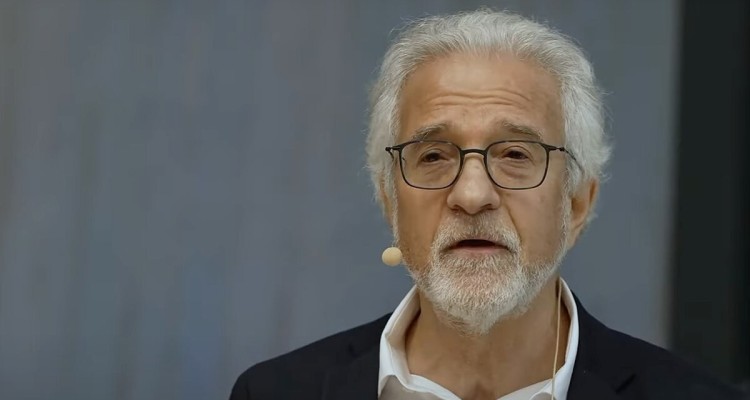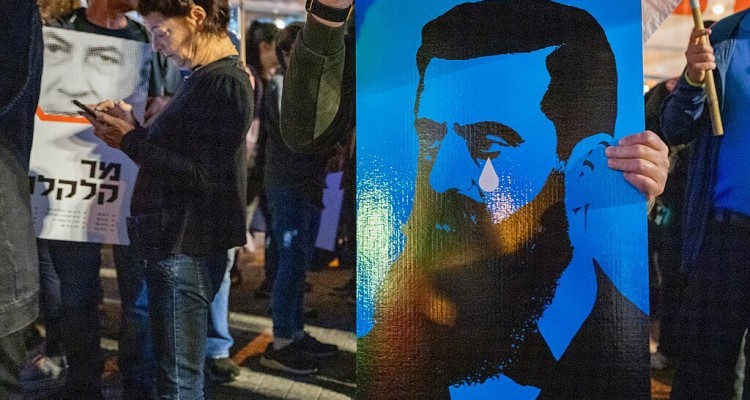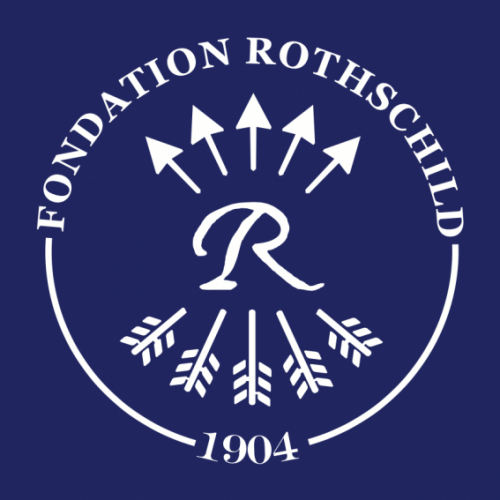Paris’ Institut du Monde Arabe (Arab World Institute) is now hosting a new exhibition dedicated to “the Jews of the Orient.” Showcasing the art and material culture of Jews in the Middle East and North Africa, the exhibit has won plaudits in the French press for a deep and sensitive depiction of these vanished Jewish communities. The museum has nonetheless raised the hackles of some Arab intellectuals, who accuse it of “normalization” vis-a-vis the state of Israel, due to the presence of several artifacts on loan from Jerusalem’s Israel Museum. Denis Charbit, political scientist at the Open University of Israel, discusses the polemic, as well as the long silence on the Jews of the Arab world, in this issue of K. English-language readers can find further information on the exhibit in this piece from the Jerusalem Post.
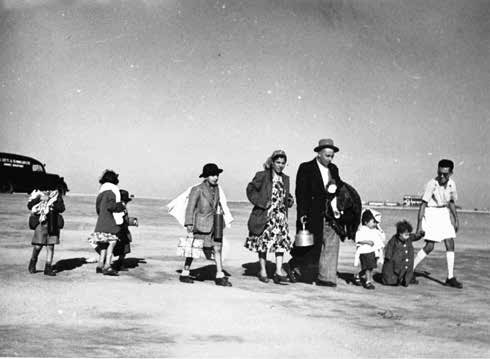
The Jews of the Orient exhibit at the Institut du Monde Arabe (Institute of the Arab World) focuses our attention on vestiges of a civilization that has both disappeared and remained in view. Disappeared because many of this civilization’s heirs have in the intervening decades grown more secular, introducing a discontinuity between present and past generations; to this leap in time has been added a leap in space, since those alive today no longer live in the land of their forebears. But visible and alive, still, as this civilization is claimed and continued by communities in Israel, France and around the world.
The Institut du Monde Arabe (IMA) in Paris’ borrowing of six works from museums in Israel has aroused the anger of some Arab intellectuals, who have condemned the perceived “normalization” of the State of Israel (their comments leave the question open as to whether the existence of Israel itself or simply the occupation of the West Bank renders the loan objectionable). Solidarity with the Palestinian cause, as the signatories to the relevant petition understand, requires banning any cooperation with this state, or even with citizens of that state, since a concert given at the museum by singer Neta Elkayam was also the target of a boycott. By drawing attention to the presence of a few pieces from Israel, the signatories have occluded – deliberately or not – the objective of the exhibit: to make known the existence of a Jewish civilization in Arab-Muslim lands that lasted more than 1500 years. At a time when “identities” tend to exclude each other, it is useful to show that this has not always been the case in history: two religions have coexisted; or, more precisely, a dominant and majority religion has tolerated, alongside it, the flourishing of a minority and dominated religion. This is not a call to restore the status quo ante or to reconstitute a political model that once prevailed – the empire and the dhimmi. But at a time in history when religions appear to us, not as islands of tolerance, but as hotbeds of fanaticism, it is instructive, we think, that the French public, and particularly those of Jewish and Muslim faith and culture, learn that it has been otherwise.

It is thus that these Arab intellectuals would have been well advised to recognize that this Jewish-Arab culture constitutes an integral part of the Arab world, including in its Israeli dimension (even if one insists on a boycott of the state of Israel). They would not have howled at the idea of Jewish culture being wielded in order to reinsert Jews into the Arab world. It is only when identities have been conceived as closed entities, unaltered and unalterable, that a common inspiration can pass for cultural appropriation. This is the misery of our time, which celebrates cultural mixing while decrying the necessary consequences of this phenomenon.
The exhibition conceived and produced by the IMA examines several key moments in the history of this civilization. The first reminds us that, notwithstanding the conversions that took place at a time when Judaism was still a proselytizing religion, these communities originated in ancient Judea. The second moment shows that these communities, scattered throughout the Maghreb and the Mashreq, adapted and acclimatized perfectly to their new environment, borrowing traditions, language and ways of life, without, however, blending in completely. From this ancient past, across the space of eons, there survived a warp of events, places and memories recorded in the Bible and the Talmud to which Judaism in the land of Islam continued to refer and comment on. Then, as a final episode in this long history, in the era of decolonization, these communities, which had built up spiritual, scientific and artistic wealth within their Arab environment over a long period of time, disappeared in no time: barely two decades. The exhibition documents the decisive moment at which some 800,000 people left their homeland, willingly or unwillingly. Finally, it shows that after this mass departure, a small number of Jewish communities would endure, notably in Morocco and Djerba. The Jews of the Orient left, but coexistence between Jews and Arabs persisted in France and especially in Israel, where two thirds of Arab Jews had arrived. The latter did not leave the East for the West, but for another place in the East, no less illustrious, on which the State of Israel was established. If the exhibition was not intended to dwell on this new chapter, it nevertheless evokes it, without embarrassment or euphemism. This evocation is far more significant than the IMA’s borrowing of a few works from Israel.
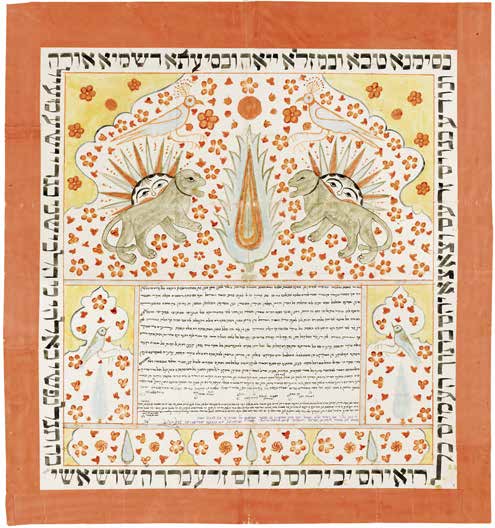
This is where we come up against a paradox: while the exhibition did not provoke any debate among Arab intellectuals concerning this Jewish-Arab culture that is more than a thousand years old, the mass departure of Jews from the East, which was not the focus of the exhibition, stimulated the reflection of Elias Khoury, one of the signatories of the initial petition. In an article published in Arabic and English in the London daily Al Quds-Al Arabi, he tackled head-on the sensitive issue of the departure of Jews from the East. We will come back to this.
*
What happened between 1948 and 1967; how can we describe this exodus? One figure speaks for itself: in this vast region stretching from the Maghreb to the Mashreq, in which there were nearly one million Jews living there at the end of the Second World War, only thirty thousand remain today. Despite the similarities of their various destinies, each of these so-called “Oriental” communities has its own story of disappearance.
Unlike those who moved to Israel out of Zionist ideals or religious motivation, most of the 800,000 Jews in Arab countries had little plan to leave their homeland. But in the era of independence, they sensed that their rights and fundamental freedoms would be threatened if they persisted and persisted in obeying their original inclination to stay.
What is immediately striking is the simultaneity of the migratory flows, forming a rising tide that swept through both the five “Eastern” communities of North Africa (Morocco, Algeria, Tunisia, Libya, Egypt) and the other four in the Middle East (Yemen, Iraq, Syria, Lebanon) – in addition to those in Iran and Turkey, Muslim but non-Arab countries. These thriving communities all disintegrated without any consultation among the Arab League countries, from Baghdad to Rabat and from Damascus to Sana’a. It is important to emphasize that forcible expulsion was the exception. It was only Nasser’s regime that gave the order to expel Jewish holders of French and British nationality, and later Egyptian nationality. Arrests and intimidation had multiplied from 1948 onward, but the Suez Crisis in 1956 was the coup de grâce. Of the 40,000 Jews in Egypt, only 4,000 remained in 1957, 2,500 in 1967 and 250 in 1970. Their property was confiscated by the authorities. The cases of Iraq and Yemen are worth mentioning because the respective authorities chose to get rid of their Jews, i.e. almost all of the 55,000 Yemeni Jews, an operation carried out from December 1948 to September 1950, and then almost all of the 125,000 Iraqi Jews, from May 1950 to April 1951, with the help of British authorities, who were willing to charter the necessary planes to transfer them to Israel. The departure of Jews from Syria and Lebanon was massive at the time of the War of Independence in 1948. In Lebanon, only a small number remained, which gradually dwindled until the beginning of the civil war in 1975, while in Syria the 4,000 Jews who remained of this ancient Jewish community were taken hostage, until Hafez El Assad agreed at the end of 1993 to let them leave. In North Africa, in addition to the Egyptian case already mentioned, the communities were depopulated in stages.
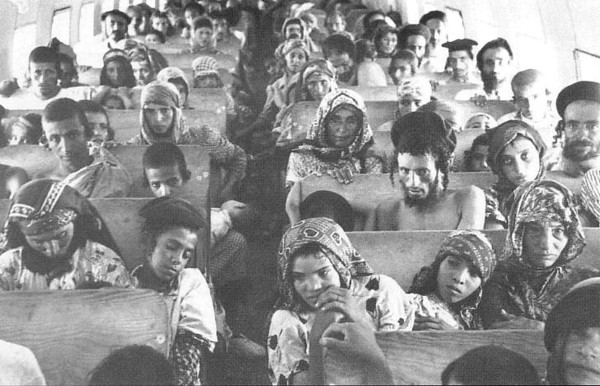
The case of Algeria stands out: the Jews were hardly driven out, but nothing was done to retain them. The Soummam Congress in 1956 did call on them to remain within the fold of the Algerian nation. But individual assassinations and sporadic massacres, including the one in Oran on July 5, 1962, definitively compromised their already tenuous chances of staying. Nearly 115,000 left for the “metropole”; only 15,000 went to Israel. French by nationality, language and culture, their departure for France was self-evident, but occurred amid a larger phenomenon. Emigration from Algeria was not specific to Jews, since they left at the same time as the “pieds-noirs” to whom they were amalgamated. Many Communist Jews wished to integrate into independent Algeria, but the experiment was short-lived and in the mid-1970s, the last handful of Jews left for France to join their loved ones, their hopes dashed.
The Jews of Tunisia left in three stages. First, after independence in 1956, when the first signs of discrimination appeared, tacit, informal but no less insidious, unofficial rather than official. The climate then deteriorated in 1961, after the Bizerte operation and, finally, in 1967, when the Arab defeat at the end of the Six-Day War found its outlet in acts of violence and vandalism perpetrated against Jews. Despite Bourguiba’s firm response, immediately dismissing his Minister of the Interior, the violence that had arisen convinced the last holdouts to leave. The case of Libya, which saw the departure of 30,000 Jews in stages, in 1949, 1953, then in 1967, to Israel, but also to Italy, is similar to the Tunisian case.
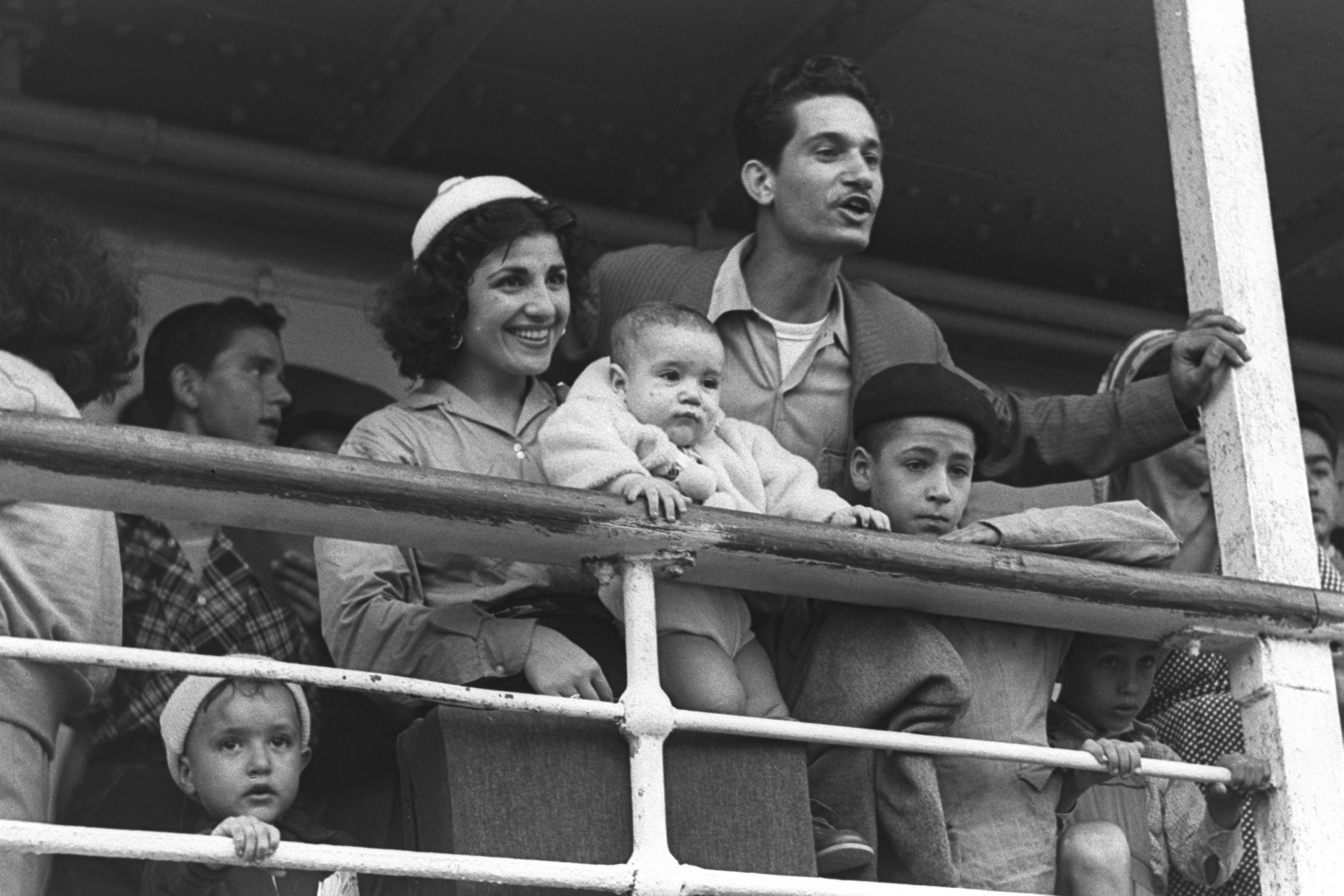
There remains the particular case of Morocco. It was there that the largest community in Arab-Muslim countries lived, nearly 300,000 souls in 1945. Until independence, the French authorities allowed the Jewish Agency and Mossad to set up emigration channels, provided that they acted discreetly. Once Moroccan sovereignty was established, King Mohammed V opposed emigration, insisting that Jews remain subjects of the kingdom. From then on, emigration was carried out through clandestine channels, passing through Gibraltar or Algeria, which was French for a few more years. When he succeeded his father, King Hassan II changed his policy by allowing Jews to leave for France or Israel, demanding a substantial payment for each of them. There are currently 3000 Jews in Morocco, mainly in Casablanca.
*
The figures are indisputable, and moreover, never disputed. What is disputed is the interpretation of the process and the responsibility for this hemorrhage. It is the failure of Arab nationalism, say some. This inclusive nationalism, based on the criterion of language, claimed to transcend confessional affiliations, which explains why Christians and Jews, also Arabic-speaking, also “indigenous,” supported and animated it ardently. But this was the choice of a minority. Others who had embraced the French language and culture under the impetus of a schooling accomplished in the schools of the Alliance Israélite Universelle found themselves at odds with the Arab language and nation, while those who leaned toward Zionism had identified with another nationalism. Some people, in order to explain the mass departure of the Jews, blame Zionist separatism, even if it means distorting the facts. It is said to have sown discord and broken the Jewish-Arab fraternity. If we look at history in detail and with accuracy, it was not Zionism as such that awakened the suspicion of Arab countries toward their Jews, but the defeat of 1948. This was the occasion to accuse them of forming a “fifth column.” Once in Israel, they were considered to be victims of Zionist propaganda, deceived and manipulated. When they went to France, they were credited with having done so of their free will. It is undeniable that when the Arab countries sought to get rid of their Jews, the State of Israel was there to receive them. Israel welcomes Jews for raison d’etre as much as for raison d’etat. The two principles are not incompatible. In fact, from 1948 to 1967, the Jews of the East did not decide for Israel or for the Diaspora. Like the Jews of Europe, they were looking for the rule of law, wherever it might be, whether it was called Israel, France, the United States, or any other state, as long as it protected their rights.
Why has this “great uprooting,” to use the title of Georges Bensoussan’s seminal work, been swept under the rug in the Arab world and everywhere else? Several causes converge to fuel this great silence. It is true that the Jews of the Arab countries, directly concerned by this history, have not taken it into account themselves. It is only in the last twenty years that the phenomenon has been dealt with by historiography and that days of remembrance have been set on the calendar of official celebrations thanks to the mobilization of associations that are now managing to make their grievances heard. Until then, the uprooted Jews of North Africa and the Mashreq had admitted that what they had suffered was not of the same order as the catastrophe that had mainly struck the Ashkenazi world. There were riots, pogroms, massacres, from Iraq to Aden and from Cairo to Oujda, but eight hundred thousand uprooted people did not make six million exterminated. One sign does not deceive: the Jews of the Maghreb and the Mashreq oscillate between nostalgia and anger with regard to their native land; there is no trace of nostalgia among Polish Jews. The Jews of the Middle East and North Africa had left behind their childhood landscape, their dead and their possessions, but only once the Holocaust had been studied, commemorated, and inscribed in Jewish memory, could this restraint on their specific fate cease.

Moreover, even if there was uprooting, the integration in France, America and Canada was felt, for the Jews of North Africa, not as a valley of tears, but as a success story. The modernization already underway before their departure was transformed into upward social mobility, particularly in France. This positive representation of the fate of the Jews does not take into account those, less numerous, who never recovered from this uprooting or did not recover socially. This downgrading was particularly obvious for the Jews of Morocco. They found themselves in a spartan, strong-willed state, which condemned them to live in peripheral cities, condemning them to social marginalization, the repercussions of which are still being felt today. Israel was a harsh country, and the Moroccans suffered from a lack of consideration, but what they lost in dignity was partially compensated by the feeling of being full citizens. They saw themselves not as refugees, but as repatriates. They were, in fact, both. Refugees, because from one day to the next, and with no hope of return, they had left their homes, leaving everything behind, taking with them only the bare minimum. They had to start from scratch, learn a new language, adopt new customs, become familiar with new landscapes and a new society; only, the language was Hebrew, the country was the land of Israel, and their fellow citizens were brothers in nationality, of the same Jewish people, whatever one may say.
*
The official narrative of the State of Israel also encouraged silence and the closing of the case. Even if there had been uprooting, the Jews could not be considered refugees since they were returning to their homeland. But regardless of Zionist official rhetoric, the departure of the Arab Jews was reframed as a population exchange that had occurred at the same time and in equivalent proportions: the Arabs left Israel for neighboring Arab countries, the Jews left the Arab world to regroup in the Jewish state. The accounts had been settled. Israel could thus justify its opposition to the return of the Palestinians and refrained from supporting the claims to financial compensation made by incipient associations of Jews from the East. Since, by virtue of a law enacted by the Knesset, the State of Israel had legally appropriated any parcel of land whose owners were absent at the time of the 1949 census, there was no need for the Jews of the East to lay claim to what the Palestinian refugees were denied.
The Arab-Israeli conflict, once it is perceived as a zero-sum game, thus presupposes the fabrication of myths so that each party can place all the responsibility for the conflict on the opponent and on him alone: the Arabs of Palestine left voluntarily to fight the State of Israel from the outside; the Jews were Zionists who had to be got rid of, so that only the Palestinians would be refugees. For more than thirty years now, Israeli historians have been shaking up the national narrative by re-establishing the historical truth, showing that there was also an expulsion and that those who left did so in panic and not to join conquering Arab armies. This truth, relayed by actors in the intellectual and cultural world, penetrated Israeli society. But this effort has not been symmetrical in the Arab world, although a first step has been taken by Elias Khoury when he admits that the departure of the Jews from the Middle East was a purge, like the Nakba of the Palestinians. To the criticism of the State of Israel, which he reproduces the clichés of the official Arab rhetoric, Khoury adds self-criticism. That he targets exclusively the “Arab regimes” may seem insufficient, since he thus exempts Arab societies, which remain largely uncritical and indifferent to this history. However, it is a crucial step that gives hope that his gesture opens a breach into which others can enter. Only then will we be able to see the light in a conflict that knowingly feeds on obscurity and denial. The Arab-Israel conflict has a circular character which, to be broken, must be broken simultaneously on both sides. Each side must confront the ghosts of its own past. This work is painful and demanding, but a better future depends on it.
Denis Charbit
Denis Charbit is Director of the Research Institute on Jewish-Christian-Muslim Relations and Professor of Political Science at the Open University of Israel (Ra’anana). He was a member of the Scientific Committee of the exhibition “Juifs d’Orient” (IMA), chaired by Benjamin Stora.
Notes
| 1 | One of six pieces on loan from an Israeli institution to the IMA |

